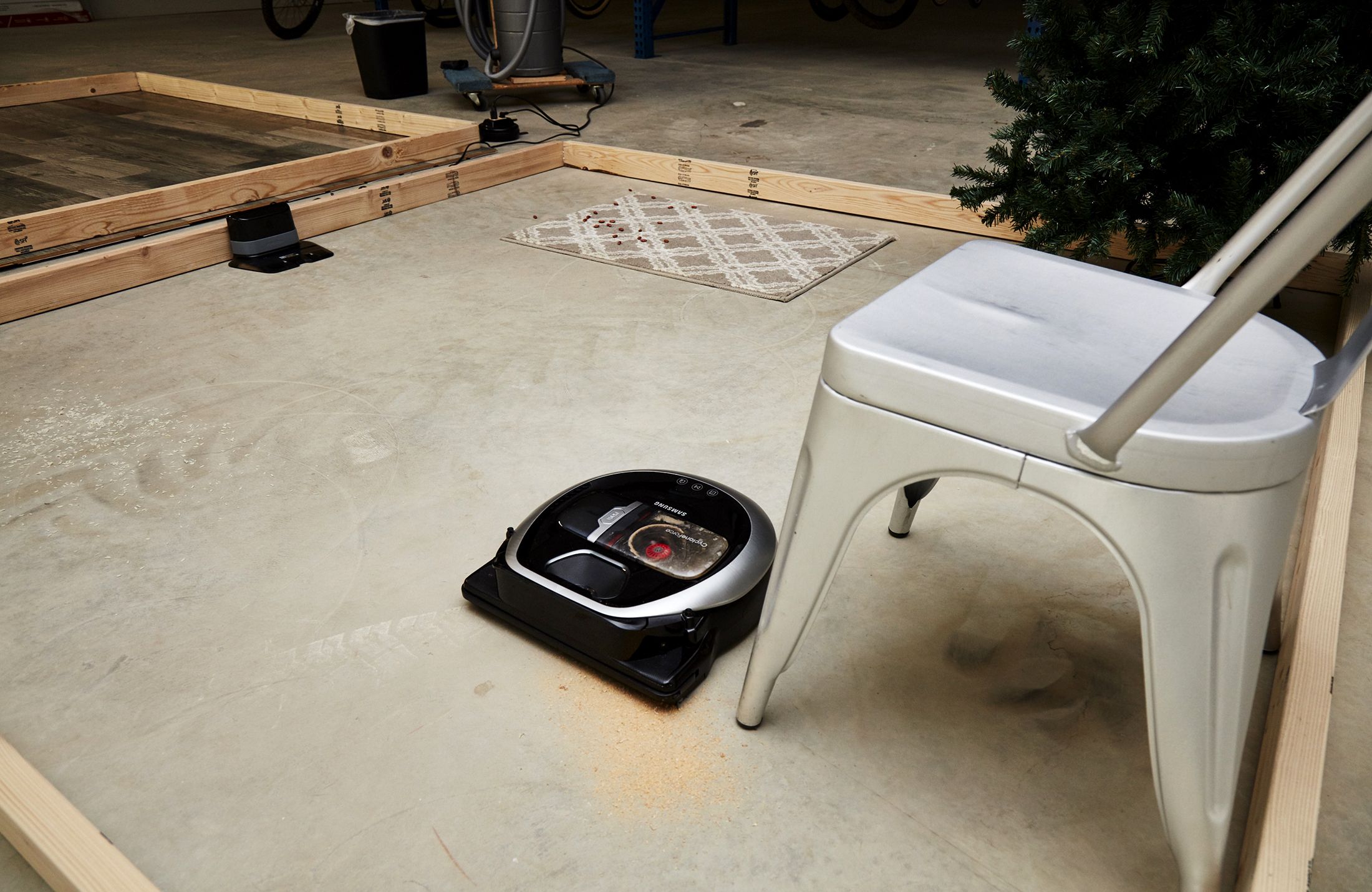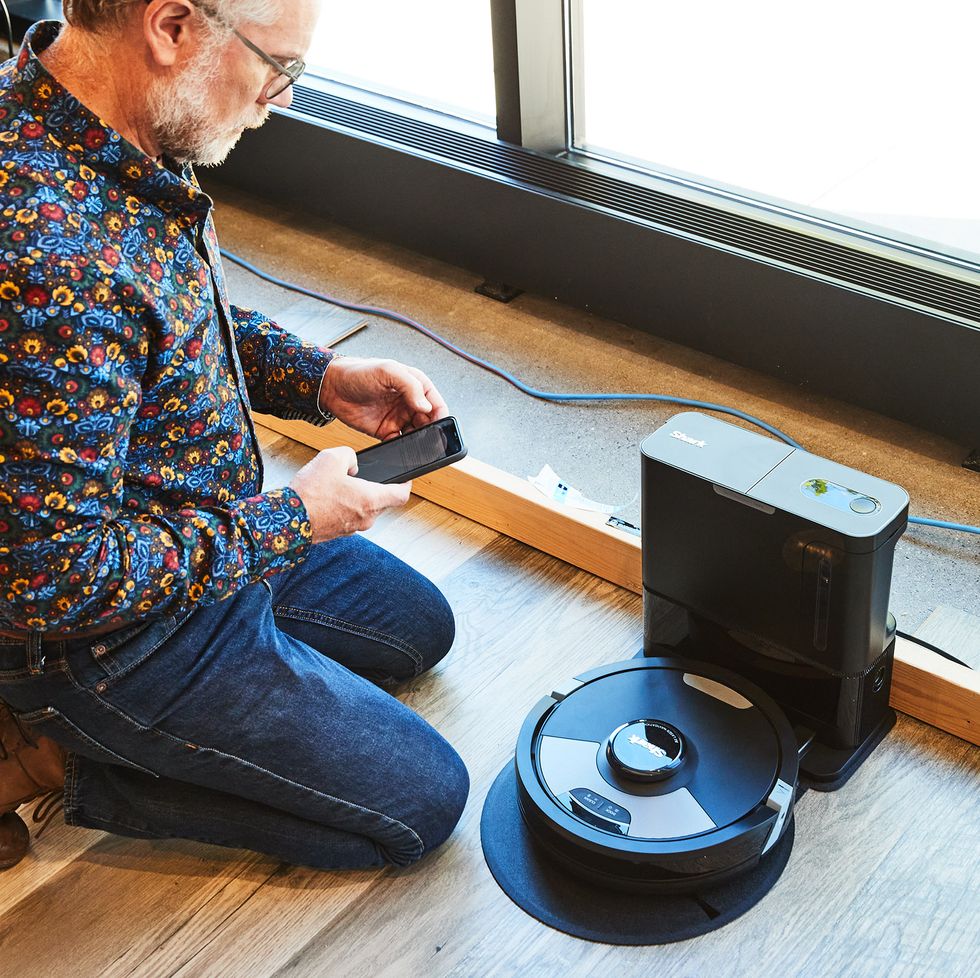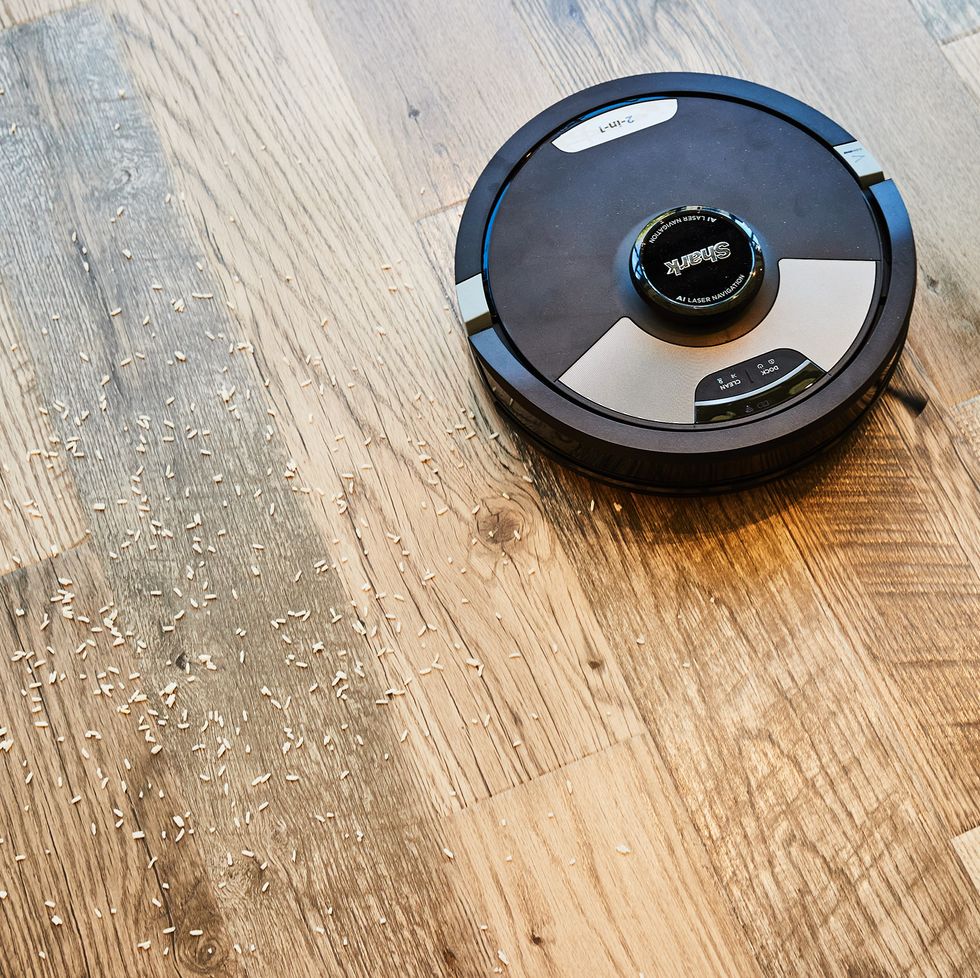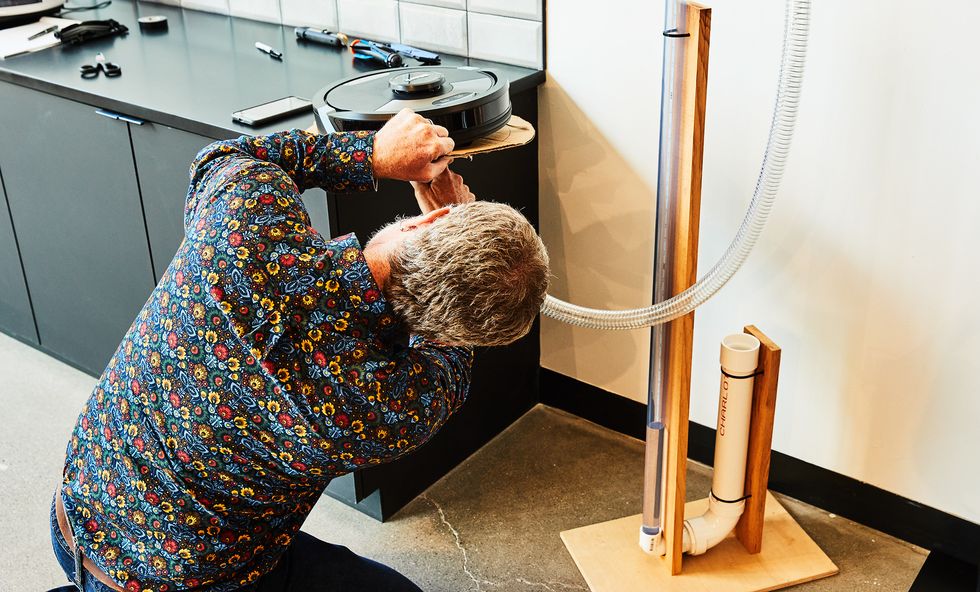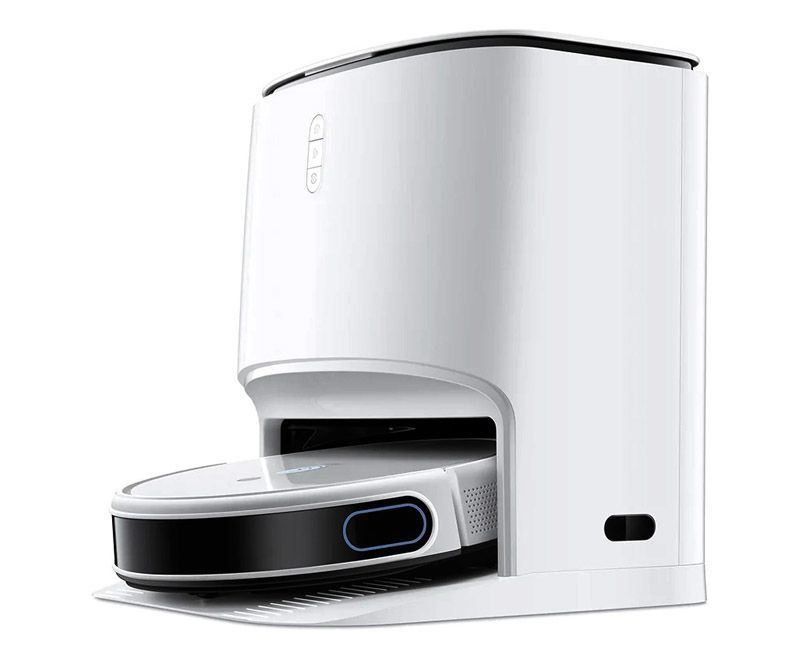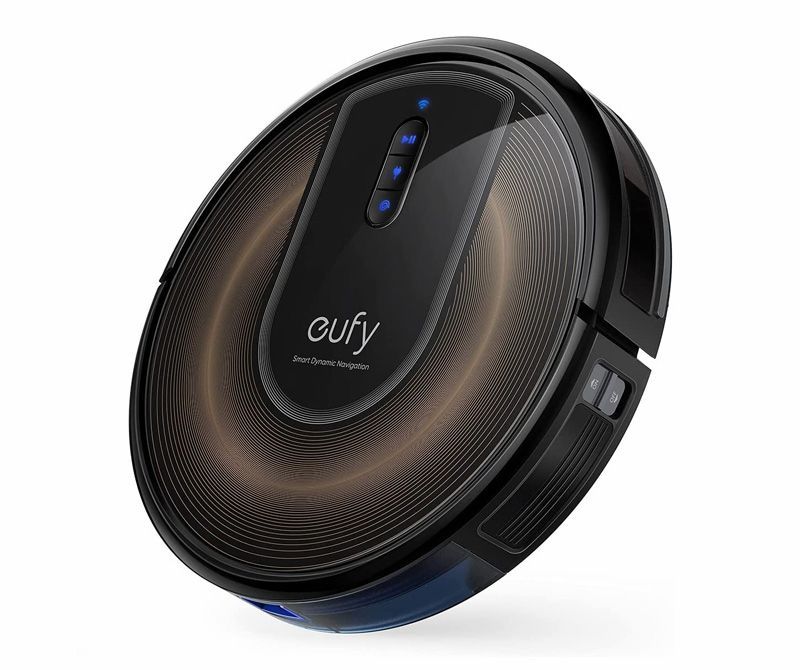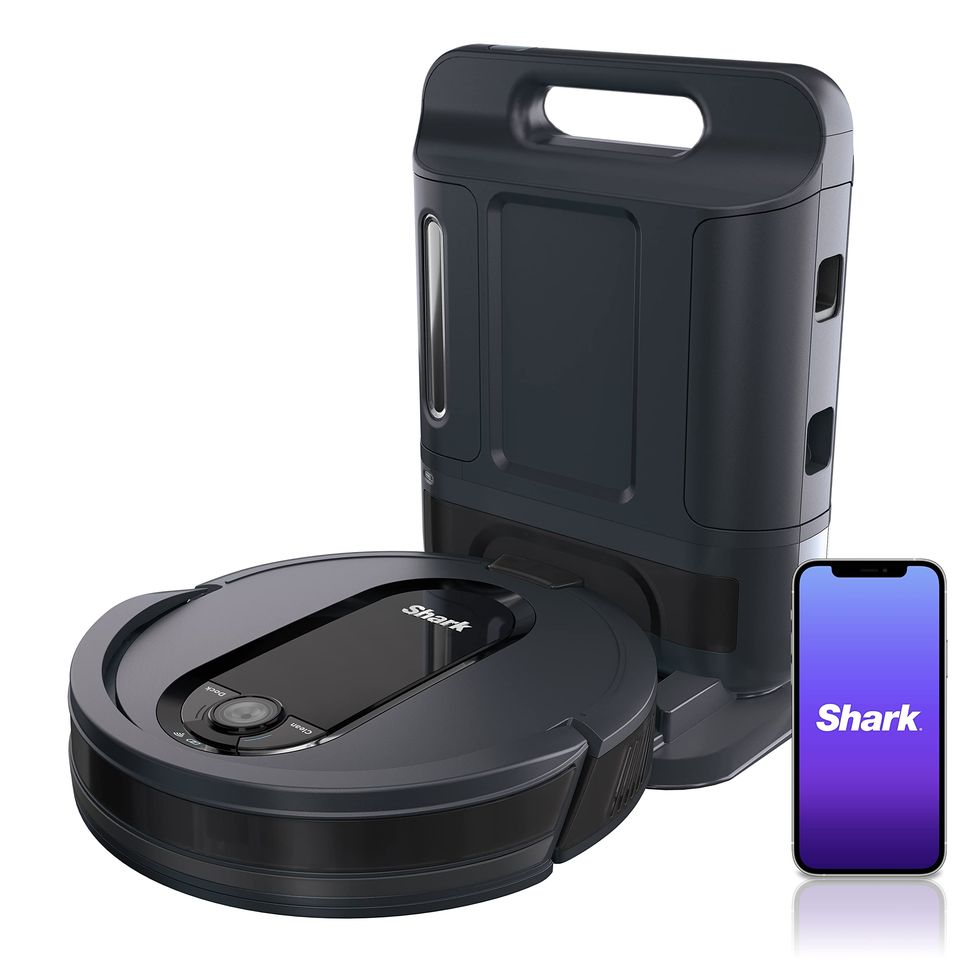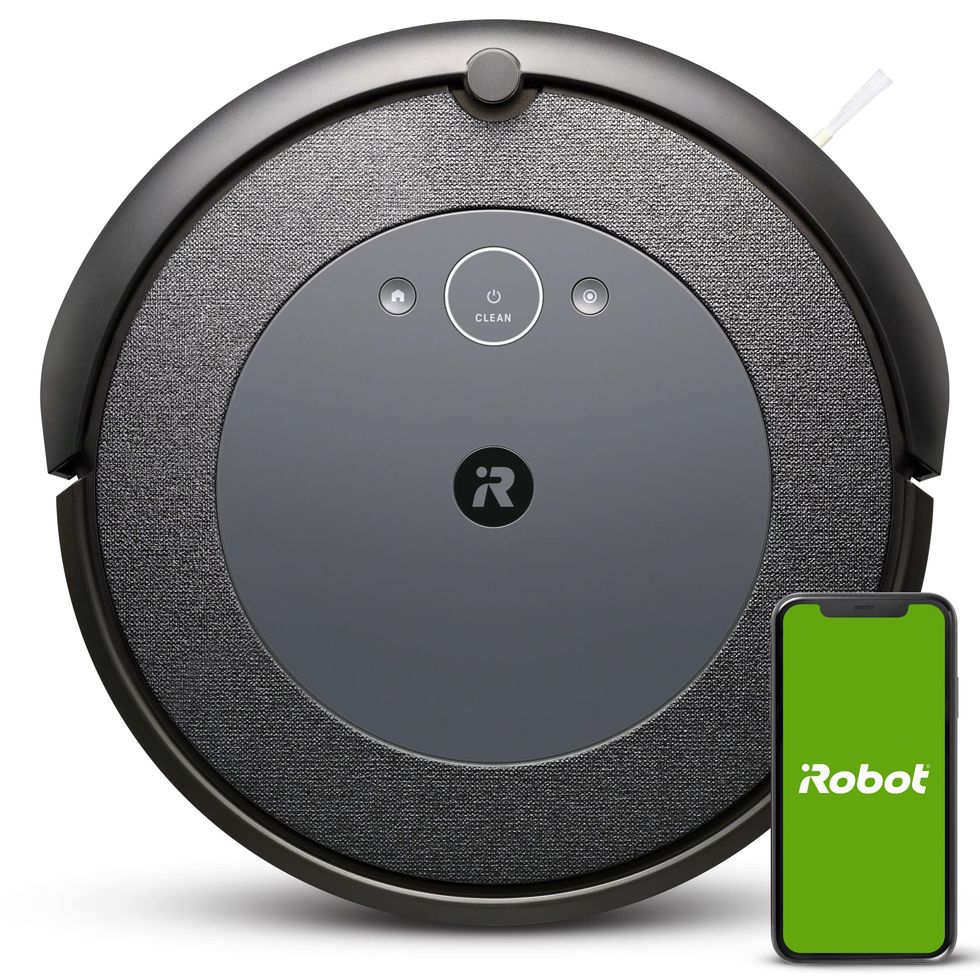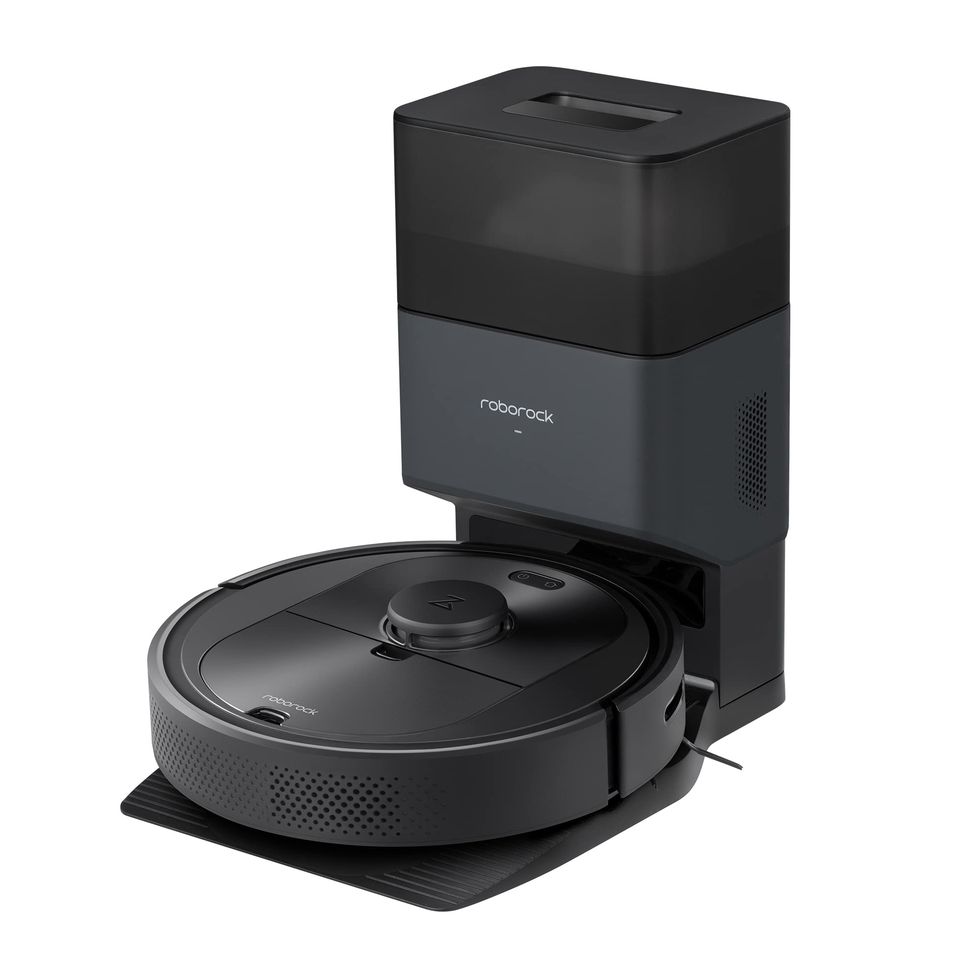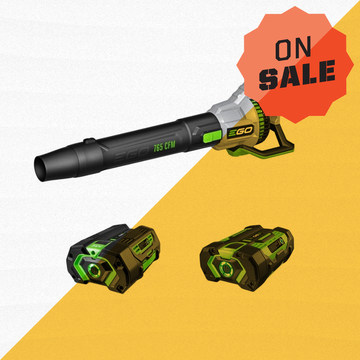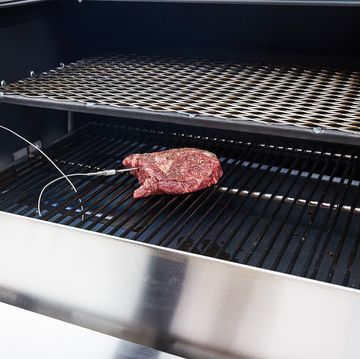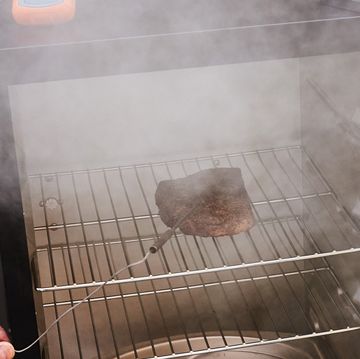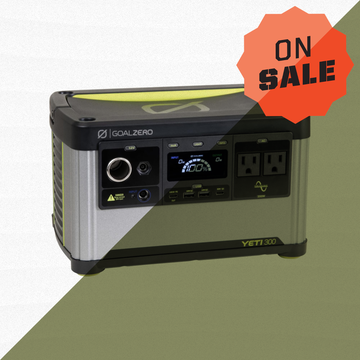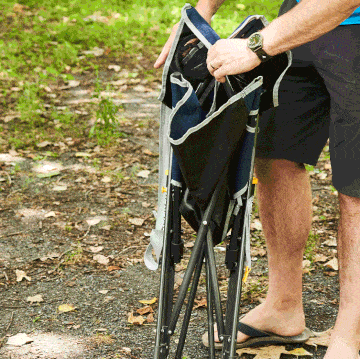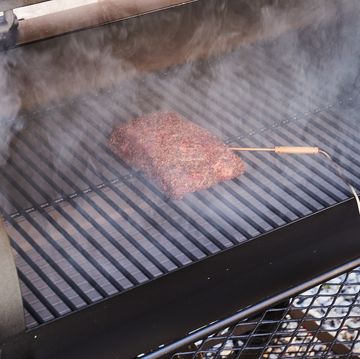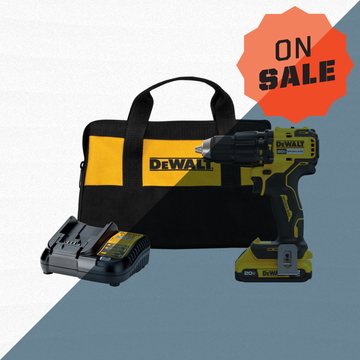Robots and AI are taking over… Your housework. Rather than pushing around a heavy canister or upright vacuum, robot vacuums are a perfect “set it and forget it” tool that will keep your floors and carpets clean, easing the burden of your demanding, time-consuming cleaning routine.
With their advanced sensors and intelligent mapping, you can set up these wafer-shaped, dirt-sucking automatons to navigate your home all on their own, efficiently picking up dirt, dust and debris, even in hard-to-reach areas like under your bed. They can clean every day or in scheduled intervals, giving you one less thing to worry about. We’ve tested the most promising models to find the best robot vacuums to keep your house cleaner and make your life easier.
The Best Robot Vacuums
- Best Overall: Roborock S7 MaxV Ultra
- Best Value: Eufy RoboVac G30 Edge
- Best Mopping Robot: Yeedi Mop Station Pro
- Best for Home With Pets: Shark AI Ultra
- Easiest to Maintain: iRobot Roomba s9+
More Ways to Upgrade Your Living Space: Best LED Strip Lights ● Best Smart Displays ● Best Robot Mops
The Expert (Brad Ford): I've been writing about, reporting on, and reviewing consumer technology for nearly 40 years, and specifically stick and robot vacuums since their appearance.
The Expert (Brandon Russell): I’m a freelance writer and editor who’s written about tech and smart home products for publications like Popular Science, Best Products, and CNN Underscored. I am a very thorough cleaner. My TikTok feed is full of videos showing people cleaning their living spaces. I’ve tried and tested all types of vacuums over the years, from heavy canister models to handheld devices. My trusty self-emptying robot vacuum runs a few times a week, helping me keep my floors spotless.
What You Need to Know About Robot Vacuums
Pet Messes
As we tested these vacuums, colleagues and friends invariably asked if we tested them with dog poop. (There are plenty of videos online documenting the ensuing devastation when a robot vacuum trundles over a pile.) Except for one of these vacs, we did not. Until recently, there wasn’t a model that we’ve found capable of identifying pet accidents. But the Roborock below now features such a dedicated pet-mess avoidance system. Other companies have promoted the fact they’re developing this feature, but only Roborock has made it to market so far.
How We Tested The Best Robot Vacuums
First, we set up three 8- by 8-foot pens, each with a different floor surface, where we could repeat cleaning scenarios for each model of robot vacuum. The floor of one corral was low- to medium-pile carpet; the second was bare, polished concrete; and the third was laminate flooring. We placed a floor mat and a wooden stool on the concrete as obstacles.
Then, in each corral, we dumped 5 grams of flour, 5 grams of sawdust, 15 grams of dried rice, and 15 grams of pinto beans to simulate various types of dirt and debris. (We should note that robot vacuums are maintenance cleaners, and these—for the sake of our stress test—were more material than you should expect a vac to pick up on a regular basis.)
On the carpet, flour and sawdust are indicators of how well a vacuum’s brushes work at agitating dirt, making it easier to suck up. On the laminate, where sawdust and flour can get deep into seams, raw suction power is needed. And dried rice and pinto beans are a challenge on concrete and laminate, because a vacuum’s brushes could quickly scatter them.
Once we had the vacuums’ apps installed and paired, we set the models loose, timing and scrutinizing their work.
Measuring Suction
Water lift, a common method of quantifying suction, is relatively easy to measure. So easy, in fact, we built a simple water lift gauge to evaluate the strength of these robot vacs. Here’s how it works: We set up the vacuums so their suction could be applied, within a sealed system, to a tube with water in it. The stronger the suction, the higher the water is lifted.
Vacuum manufacturers tend to list vacuum strength in Pascals (Pa), which can be converted to water lift: 249.1 Pa equals 1-inch of water lift. You’ll notice our numbers are lower than manufacturers’ claims, and that’s to be expected because they don’t tell us where or how they’re measuring. They may take measurements at the impeller, or without going through the filter.
It’s similar to how auto manufacturers list horsepower ratings on cars—as an engine spec. But the transmission, differential, and other systems all leech some of that horsepower, so what’s actually available at the rear wheels isn’t the same number listed in the specs.
To be as close as possible to the actual amount of suction available under the vacuums, we removed the vacuum brushes and measured right through the housing above them, with the vacuum filter in place.
How We Updated
After evaluating our list, we incorporated supplementary selections to cater to a broader range of preferences, diverse living situations, and varying budget considerations. While we haven’t put these models through our strict lab testing, we are confident they meet the standards set by our top picks. We relied on our prior testing experience and market research to make our new selections, evaluating the models based on smart features, cleaning abilities, battery life, and customer support.
The Best Robots Vacuums: Tested and Rated
Roborock’s S7 MaxV replaces the S6 MaxV we tested previously. This new generation improves upon the previous model with more suction, faster processing speed to recognize obstacles, and a fully automated dock. Overall, the vacuuming speed remained similar to the S6.
In the laminate corral, it vacuumed everything clean, leaving no trace of the debris we had strewn. It finished our carpeted corral in just over 9 minutes, with barely a trace of sawdust left behind. In our concrete area, with the rice we spread, the side brush scattered a few grains, which then got left behind. The small traces of debris missed, as with other models tested, is largely a byproduct of the sheer volume of detritus we used in testing.
Using both vSLAM and LiDAR to navigate, the S7 MaxV started with a diagonal zigzag path, presumably scanning the surroundings. It then quickly went around the perimeter of the corral, following that up with a series of out-and-back passes moving across the whole space.
The vacuum then performed a second pass of the perimeter, ending with a final out-and-back series of sweeps, criss-crossing the previous passes, and then returning to the dock to top off the battery. The more times it vacuumed the same space, the more precise and efficient the robot’s path became.
While the mopping was sufficient to clean up the muddy footprints we left in testing, the automated features of the docking station are what really impressed us. Aside from the robot vacuum self-emptying into the dock, the onboard mopping reservoir is automatically refilled from the dock. Plus, the dock rinses and cleans the mop pad with an automated, spinning brush, directing waste-water to its own tank. So, with an empty dust bin and a tank full of clean water, the robot can run up to eight weeks unaided.
The S7 MaxV also pleased us during practical testing in our homes. In the Roborock app, we watched as the vacuum quickly created accurate maps of our rooms as it vacuumed in real-time. It also recognized and avoided sneakers, a power strip, and some wooden prop dog poop we threw down, leaving icons on the maps indicating what obstacles were and where they were encountered.
In the app, we could view saved maps in 2D or 3D formats, edit maps, add virtual walls, add no-go and no-mop zones, as well as create room specific settings and cleaning schedules. Remarkably, you can also pull up live video from the robot while cleaning is in process, and even use it to place a video call to speak to whoever may be present in your home.
Yeedi’s Mop Station Pro is both a mop and a vacuum. With the large, rear dustbin attached, it works as a vacuum, running on a schedule you set to keep your house clean. When you want to mop, replace the dustbin with the mopping attachment that has two rotating, replaceable scrubbers.
Unlike with other mopping robots, which require you to fill an onboard tank, we were surprised that it filled automatically from a reservoir in the docking station. We discovered the dock also has a tank to hold dirty water from rinsing the cloth scrubbers after mopping.
During our mopping test, the Mop Station Pro performed well, scrubbing the laminate floor clean of our muddy footprints. The spinning scrubbing pads did kick some of the dried mud around, but our test pushes the limits of what we would expect the robot to mop up. While the floor was cleaned well, when we inspected the bottom of the robot, we needed to clean some mud off the wheels.
In our own homes, we would normally grab a towel and quickly wipe up heavy mud before setting the robot mop loose to do its job. As a maintenance cleaner, the Mop Station Pro does a good job cleaning everyday types of drips, smudges, and marks on the floor.
As a vacuum, it performed well in our testing on all surfaces. We observed no trouble transitioning from hard floors to area rugs or floor mats, and the Mop Station Pro generally moved through the test areas in a methodical manner. It occasionally left a couple of grains of rice or a stray kidney bean, mostly due to the side brush flinging them across hard, smooth surfaces—something we regularly see on all vacuums with side brushes.
Paired with Yeedi’s app, setup, navigation, and mapping were straightforward. We were able to create no-go zones, set auto carpet detection to bump up suction for rugs, and schedule cleanings. For $800, you get a lot of features with the Mop Station Pro. And as the name implies, this vacuum is more biased than most toward mopping.
Shark’s AI Ultra robot vacuum is a hands-off maintenance cleaner with a HEPA filter, making it a great option for pet owners. The AI Ultra can run unaided up to 60 days because the docking station empties the robot at the end of every cleaning cycle. After each stage of testing, we examined the vacuum’s onboard dust bin after it self-emptied and found it clear of debris.
We did note that there was always a small amount of dust residue sticking to the inside due to static electricity. When the docking station does need emptying, we found it best to do it into a large garbage can in the garage or outside, because dust can become airborne, which sort of defeats the advantages of the unit’s onboard HEPA filter if done inside.
On our various test surfaces, the AI Ultra performed equally well on hard and carpeted surfaces. It occasionally left a few grains of rice or a stray kidney bean in our admittedly heavily deposited debris, but no more than the other models.
Initially, the app directs you to run an exploration/mapping pass the first time you set it up in a new space. This allowed us to edit the map, adding no-go zones, carpet, and high traffic areas where it can increase suction. We could also assign areas to spot clean or have the AI Ultra make two passes instead of one.
We also tested the obstacle avoidance features when navigating our space. As long as the obstacle was taller than the vacuum, the robot would stop and maneuver around it. When we laid a roll of packing tape on the floor, the vacuum pushed it around. So, the vacuum will pick up individual Lego bricks, but it will avoid your child’s Lego castle. If these types of things are common in your house, you’ll want to set up no-go zones for children’s play areas.
The AI Ultra will also function as a robotic mop, when you swap out its onboard dust bin with the water tanks and mop pad. Our muddy footprints were a lot to ask of it, but the AI Ultra did a good job of wiping the area clean, with just a couple of crumbs of dirt left behind. We did have to thoroughly clean the mop pad after the test, as it was caked with mud—but our test was beyond a normal mopping scenario.
The s9+ clocked the fastest time to finish the carpeted area, leaving just a trace of sawdust after 9 minutes. In the concrete area, it took more time navigating around the wooden stool but was delicate in doing so, cleaning around the legs thoroughly. Like the others, it did leave some rice at the edge of the floor mat. In the laminate corral, we couldn’t find any debris except for a dusting of flour in one spot.
Keep in mind that the s9+ has flexible ridges and paddles instead of bristles. This appeared to be a little less effective with very fine particles on the smooth, hard surface.
We had the most difficulty discerning what the s9+ was actually doing. What initially appeared to be a random path, we realized, was a series of location exercises using vSLAM. It first moved left and right, bumping both sides in multiple places, and then it worked toward the corners, looping into them in a wide curve before moving tight in and backing out. Then it performed a trip around the perimeter, and then into the corners again. After all that, it moved to make left and right passes to cover the middle area. Finally, it vacuumed left and right of the dock.
This Roomba has a slightly different design than most other robot vacuums, in that it has a flat front with squared-off corners. We found two advantages of this, the first being that it got into corners better, and the second that it allows for wider brushes—about 30 percent so.
The G30 Edge is the least expensive model from our test, but you wouldn’t know that by how it cleaned our test corrals. It was slightly slower than the others, sure, yet it effectively and methodically vacuumed each area. It left barely a trace of debris on both the carpet and laminate floor and missed some rice transitioning from the floor to the mat in the concrete area. We did notice the G30 Edge bump things slightly harder than the other vacuums— not surprising, since its navigation is an enhanced version of bump-and-go.
Despite having that lower-tech nav system, this Eufy seemed remarkably efficient. Leaving the dock, it immediately started a straight out-and-back pattern, moving left to the wall with each pass. It then bumped the wall in a couple of places, confirming its location, before returning to the center. It continued out and back to the right wall, where it started around the perimeter to the lower left corner. It then began left and right passes from the front to the back, followed by the perimeter, ending with the lower right corner.
Testing in our homes, we used the app to monitor progress in real time. While we could view completed vacuuming and maps in the cleaning history, we couldn’t save or edit them. To set no-go zones, we laid down the included magnetic strip to create physical barriers. While this worked well, we did need to remember to put the strip in place every time we had the vacuum scheduled to clean.
More Picks We Love
A little older and a little cheaper than the Shark AI Ultra, my Shark IQ AV1010AE Self-Empty XL has been keeping my floor clean for years. It features a self-emptying base that can hold up to 45 days of dirt and debris, making the already light maintenance of your vacuum an occasional chore. All you have to do is empty the bagless base into the trash once it gets full, rather than cleaning the robot itself.
The AV1010AE also offers a navigation feature that will map your home and clean it row by row rather than aimlessly bouncing around. It features a strong set of core clean tools, including multi-surface brush roll for cleaning carpets and hardwood floors, as well as a side brush to remove debris from edges and corners. My only gripe is that the self-emptying function can get a bit loud, so I recommend scheduling it so it finishes cleaning before you go to bed.
When space comes at a premium, the iRobot Roomba i4 EVO delivers a nice balance of smart features, cleaning power, and price in a compact package. It features two multi-surface rubber brushes and powerful suction that quickly cleans dirt, debris, and pet hair. With customizable cleaning routes, the i4 can navigate your space based on preferences and create the most thorough route possible, deviating from its pattern when it needs to get around furniture and other obstacles.
The i4 EVO also includes dirt detection sensors to identify and thoroughly clean dirtier areas (like a kitchen). It can also learn your cleaning habits and suggest cleaning more thoroughly during seasons when pollen and other pollutants are more prevalent. As it moves throughout your apartment, the cleaning head can automatically adjust its height from hardwood floors to carpet.
And, thanks to compatibility with Google Assistant and Amazon Alexa, you can control the i4 EVO with voice commands. For example, you can tell the vacuum to clean your kitchen after cooking using your phone or another smart device.
As fans self-emptying vacuums, we love that you can add a self-emptying charging station, the iRobot Clean Base, which can empty out and store up to an estimated 60 days worth of dirt, dust, and hair. The base station will take up a little more space, sadly, but save you a lot of time.
The Roborock Q5+ is our pick for those who live in larger homes. The robot vac features LiDAR sensors that can create 2D and 3D maps of your home, thanks to a powerful smart-mapping feature. After the vac’s first cleaning session, it creates an interactive map in the companion app, allowing you to set up targeted room cleaning and no-go zones. The laser navigation system works in tandem with bump sensors to quickly clean your space while avoiding obstacles like furniture.
The Roborock Q5+ includes other nice-to-have features like a self-emptying dock and a brush that’s effective for cleaning dirt, debris, and pet hair. But the real standout feature is the robot vacuum’s run time; the Roborock Q5+ is rated to clean for up to 180 minutes (3,230 square feet) on a single charge. The long battery life ensures the robot vacuum is more efficient and encounters fewer interruptions before returning to its dock.
Q+A With Our Experts
Brad Ford has spent most of his life using tools to fix, build, or make things. Growing up he worked on a farm, where he learned to weld, repair, and paint equipment. From the farm he went to work at a classic car dealer, repairing and servicing Rolls Royces, Bentleys, and Jaguars. Today, when he's not testing tools or writing for Popular Mechanics, he's busy keeping up with the projects at his old farmhouse in eastern Pennsylvania.
Brandon Russell is a freelance writer covering gear and technology. He started his journey as a news writer at a small newspaper and later began reviewing smartphones, movies, and video games. In his free time, he enjoys the slower, more intentional experience of using a 35mm film camera and making short videos about movies he grew up watching.
